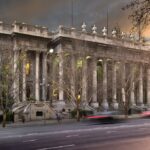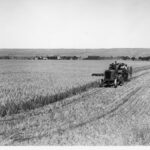One of the three state political parties to form the Liberal Union in 1910, the FPPU began on 10 August 1904 at a general Show Week meeting in Adelaide of small farmer groups. Keen to protect their interests against a rising labour movement and the dominant urban bias of the Australasian Nationalist League (ANL), the main conservative body in the South Australian parliament, they also sought to broaden the Legislative Council franchise and break the ANL’s stranglehold. FPPU leader Richard Butler briefly led a coalition administration with the ANL in early 1905. In the 1906 elections the FPPU gained at the ANL’s expense, especially in the marginal wheatlands of the upper South East and Mid North, encouraging electoral cooperation federally and in certain state seats to counter both the United Labor Party and the radical liberals of the new Liberal and Democratic Union (LDU). When Tom Price’s death ended the Labor-Liberal administration of 1905–09, the LDU’s Archibald Peake included Butler in his cabinet, and Labor became the official opposition. Reaching compromise with the ANL on the Legislative Council franchise and land reform, the FPPU was spurred by Labor’s triumph at the 1910 elections to initiate the conference that year at which the three non-Labor organisations negotiated a formal ‘fusion’. The FPPU’s lasting legacy to the Liberal Union, enshrined in its constitution in 1911, was the autonomy of local branches and district committees.
Media
This is a revised version of an entry first published in The Wakefield companion to South Australian History edited by Wilfrid Prest, Kerrie Round and Carol Fort (Adelaide: Wakefield Press, 2001). Edited lightly. Uploaded 18 August 2015.
Cite this
Jenny Tilby Stock, ‘Farmers and Producers Political Union (FPPU)’, SA History Hub, History Trust of South Australia, https://sahistoryhub.history.sa.gov.au/organisations/farmers-and-producers-political-union-fppu/
Sources
Jaensch, D (ed.), The Flinders History of South Australia: Political History (Adelaide: Wakefield Press, 1986)
Jaensch, D, ‘South Australia’, in P Loveday, AW Martin and RS Parker (eds), The Emergence of the Australian Party System (Sydney: Hale & Iremonger, 1977)
Hirst, J, Adelaide and the Country 1870–1917: Their Social and Political Relationship (Melbourne: Melbourne University Press, 1973)






Comments